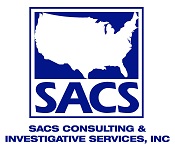Lying is an inherently human trait, without question. Everyone has lied at one time or another. But even if the lie is to protect someone or something (e.g. company), it’s still a lie. Therefore, it should be no surprise that lies in the workplace happen all the time. In fact, 83% of college undergraduates admit to lying to get a job. This is a perfect example of why learning how to detect lies in the workplace is essential for professional success.
Motivated to Protect
Why do people lie? Reasons vary from person to person and situation to situation. It all comes down to context and whether someone feels the need to protect themselves, someone or something from the truth.
According to Psychology Today, there is no specific part of the human brain controlling whether or not someone tells a lie. Lying is a choice, usually triggered by self-preservation. In other words, people decide whether to lie or not based on whether it will benefit them more than it will harm the other person, and on how they think what they say will be interpreted by the other person. Since work is an essential element for self-preservation, lying is prevalent to protect our well-being (i.e. our livelihood in the form of ego or monetary incentives).
Below are some common reasons for omitting the truth at work:
- Avoiding punishment or embarrassment
- Obtaining something they are not qualified to receive
- Exercising power over others by controlling information
- Getting out of an awkward social situation
The key is to know when you are being lied to by a manager, coworker, customer and/or vendor. The ability to detect a lie could be the best way to succeed in the professional world, setting yourself apart from competition both inside and outside the office.
Verbal Signs of Deception
Did you know that 75% – 82% of lies go unnoticed? Why? Because we do not believe someone will lie to us.
Don’t be fooled; it’s not always easy to tell if you are being lied to by body language and gestures alone. People have unique speech patterns and behaviors that do not always indicate lying. For example, body language experts say that people look to the left or the right when they are lying. Knowing which side is a person’s “remember” (truth) vs. “constructive” (lie) side is the key. However, the “lie” side is not always the same side for everyone. It takes knowing the person for a while to pick up on their body language cues. In the case of coworkers, customers and/or vendors the relationships are often cursory at best, since there is often not enough time to “get to know someone well” enough to pick up on their “tells” when they are lying. When someone displays two or more deceptive behaviors, that’s the time to be on alert.
How someone answers a question or inquiry is often the most telling indicator of untruthful behavior. Below is a list of some verbal indicators to watch out for to catch a liar:
- Omits answering a direct question
- Offers a non-specific denial “I would never do that”
- Denies doing something within a long-winded answer
- Repeating the question (often to buy time and come up with a story)
- Becomes immediately and vehemently defensive
Make no mistake, people lie. It’s human nature for self-preservation in one way, shape or form. Don’t be fooled that you won’t be lied to. Take the necessary steps to listen to how someone responds to an inquiry to detect the potential lie.
Check back in a couple of weeks to learn how to uncover the truth. There are ways to communicate with others to minimize being lied to in the workplace.
Learn to Deal with Lying in the Workplace
Lying in the workplace is a fact of life. SACS Consulting & Investigative Services, Inc.’s training, Detecting the Lie, can train your staff how to detect lies and uncover the truth in all professional communications. Contact or call us at 330-255-1101 to speak with one of our training professionals today!


Since 85% of teens cheat, lying has become even more prevalent.